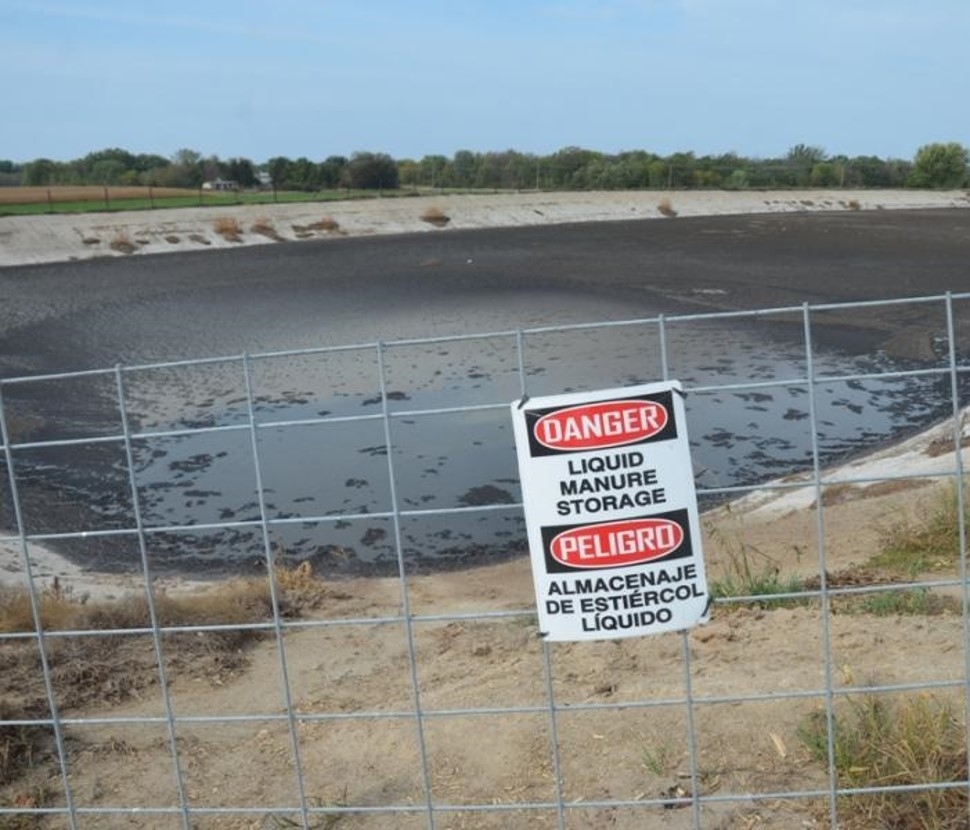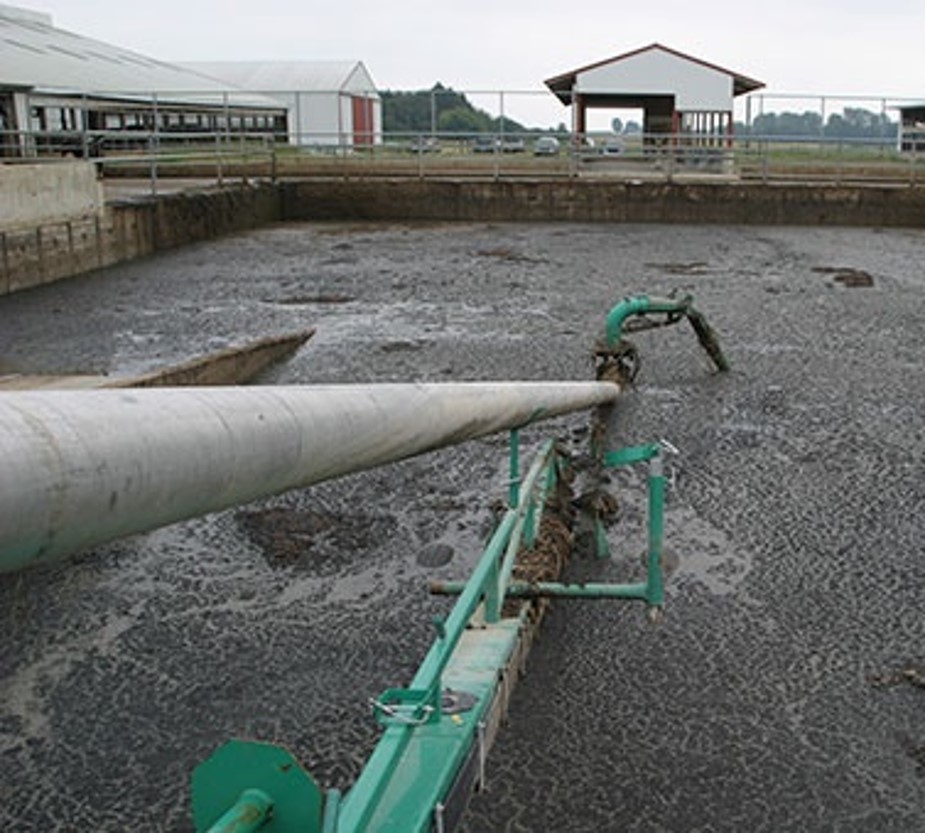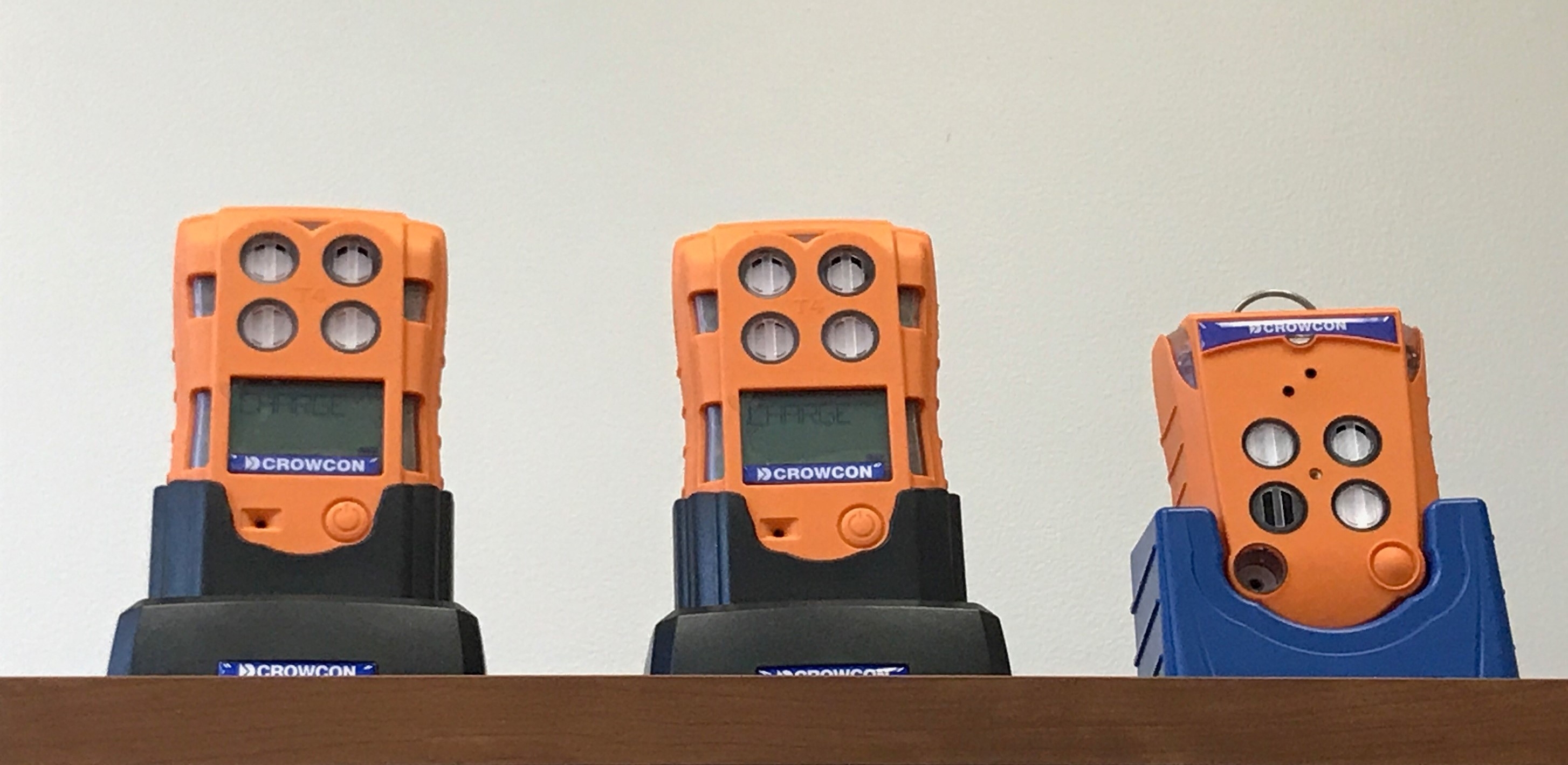Module 7: Manure Pit Safety

Manure Pit Systems
Of the approximately 2 million farms in the United States [USDA 2022], an unknown number contain manure pits or tanks. Manure pit systems are used primarily on livestock farms (including dairy operations) to allow for the easy cleaning of animal confinement buildings and the efficient underground storage of large amounts of raw manure. Because large areas of the confinement building can be cleaned with a water hose or other similar methods, such handling of manure is more efficient than the historical method of shoveling solid animal waste.
Inside the pit, the manure undergoes anaerobic digestive fermentation to form fertilizer. The digestive process can generate four potentially dangerous gases, as seen in this incident where three men died.
National Ag Safety Database articles of interest:
The accumulation of these gases within the confined space of the manure pit can produce an oxygen-deficient, toxic, and/or explosive environment.
Often, these farms use manure as a fertilizer. The manure in the pit is agitated, pumped into a manure spreader, and spread. Manure contains valuable nutrients that helps feed crops grow.
Recognizing the Hazard
Common manure pit hazards are:
- Atmospheric: toxic gases, oxygen-deficiency, or flammable/explosive gases can render a person unconscious in a matter of minutes.
- Immersion/engulfment: any material that can surround and/or drown a person can be deadly. It can be in the form of finely divided particles (ex. grain, silage, dirt, gravel) or liquid.
- Machine-related hazards: pumps, mixers, agitators, etc. can pose a risk of injury with contact, or cause a person to become entrapped.
Atmospheric
- The most dangerous gas associated with a manure pit.
- Accumulates low in the space because it is heavier than air.
- H2S smells like rotten eggs initially, but deadens your sense of smell over time at about 100 ppm, increasing your risk of overexposure to it. Signs and symptoms of exposure can include watering eyes, headaches, coughing, or nausea at low levels. High levels (700 ppm or more) can result in rapid unconsciousness or collapse within 1 to 2 breaths, and death within minutes.
- H2S is flammable.
More information on hydrogen sulfide is available on OSHA's website here.
- Odorless and colorless - cannot be detected with your senses (sight or smell).
- CO2 displaces breathable air.
- Some signs and symptoms of exposure include headache, dizziness, weakness, shortness of breath, rapid heartbeat, chest pain, and sudden tiredness/fatigue. Get fresh air immediately and call 911.
- Like H2S, it is heavier than air and accumulates low in the space.
- Ammonia occurs naturally and has a pungent and distinct odor, which may smell like decaying fish.
- It is corrosive and can burn your eyes, nose, throat, and lungs when it comes in contact with moist tissues.
- Found in almost all animal storage buildings.
For more information on ammonia expoure, click here.
- Methane is odorless and lighter than air.
- It is usually harmless at lower concentrations; however, higher concentrations can reduce the oxygen percentage in the air and cause suffication/asphyxiation.
- Signs and symptoms can include mood changes, slurred speech, vision problems, facial flushing, dizziness, increased heart rate, and headache.
- Methane is highly flammable and explosive when it accumulates at 5 - 15% of air at the the lower explosive limit (LEL) in a space.
Immersion/Engulfment
Manure can also be stored as a liquid in areas like this. Be sure that there is appropriate fencing to keep personnel and animals out of the pit, and signage to warn unauthorized personnel of the danger.

The consistency of manure in these pits makes rescue much more difficult than from ponds or water. A person could quickly drown or become trapped if they were to slip or fall into the sludge. If the pit must be accessed to load or unload manure, a safe working platform with slip-resistant flooring and a handrail would be ideal. A means of rescue, such as a hook or rope with a floatation device should be readily available in case of emergencies.
Machine-Related
Equipment used to agitate or pump manure from the pit can break, jam, or otherwise need servicing or maintenance. Personnel may attempt to enter the pit under dangerous conditions, underestimating what could go wrong. Having a rescue plan in place is crucial.

Only persons trained and properly equipped to work on the equipment should do so. A rescue plan should be in place, and someone to assist should be available.
Evaluate & Control the Hazards
Dangerous gases may accumulate anywhere manure accumulates and breaksdown. Using your sense of smell is no way to judge if there is a toxic gas present or how much has accumulated.

Purchasing an air monitor to check for gases may be a life saver. Units like these can monitor several gases at one time, such as oxygen levels, explosive gas levels, hydrogen sulfide, and another gas of choice based on what is likely present in the space. Air monitors must be calibrated periodically, and sensors replaced once they are depleted.
Ensure that access to manure pits or ponds is prohibited and secured with fencing and signage.
Perform regular maintenance on pumps and other pit related equipment when the conditions are the safest - low levels of manure, natural ventilation, equipment de-energized, someone to assist if something goes wrong.
Farm Safety - Manure Pit Safety, MDVA Coop


